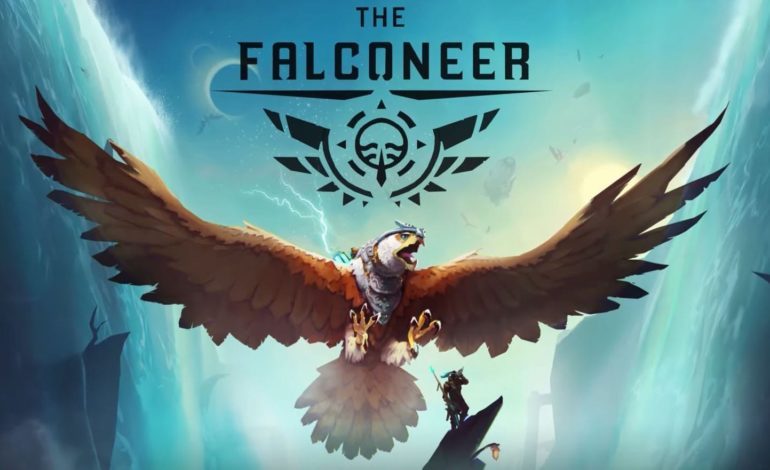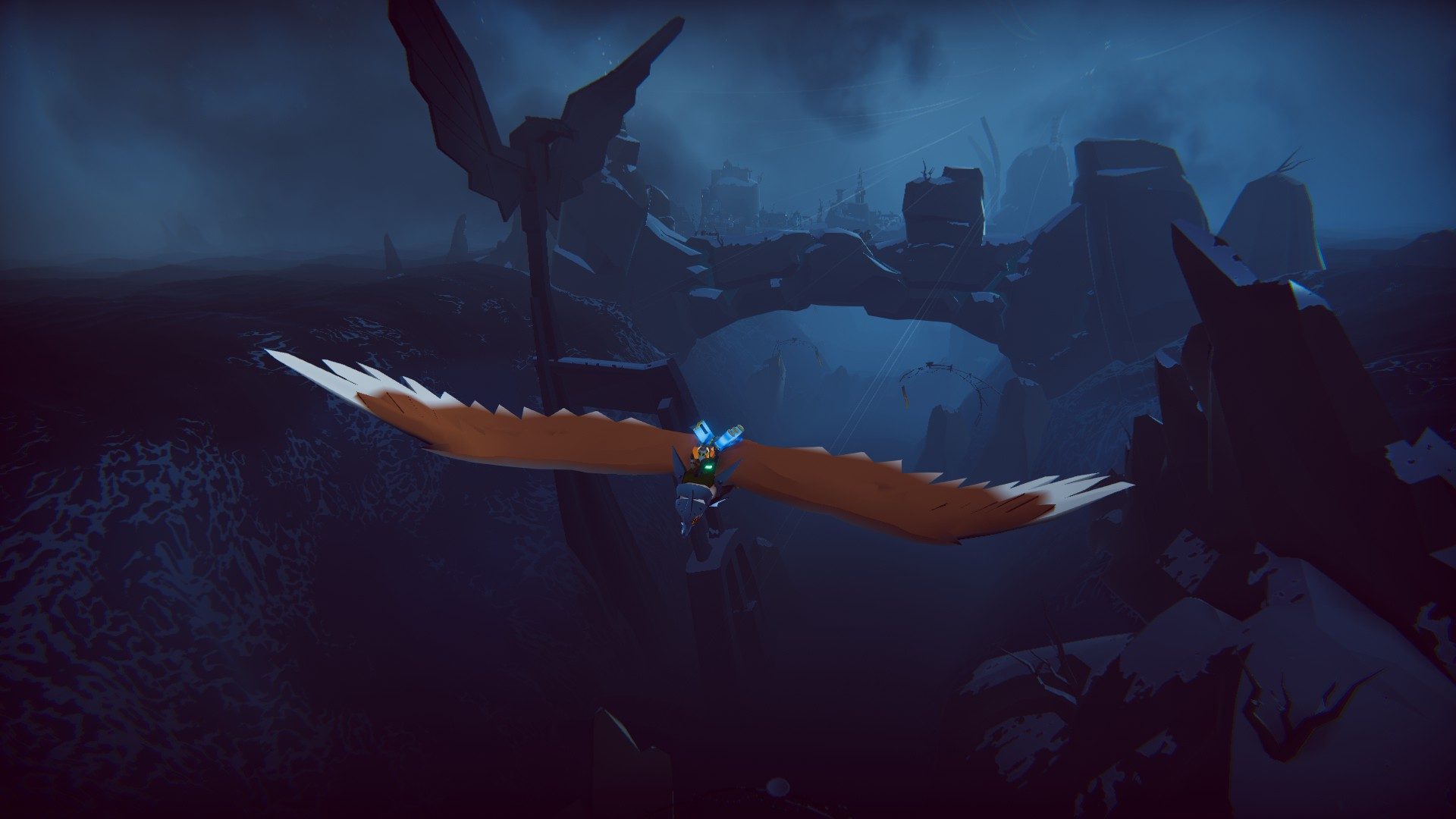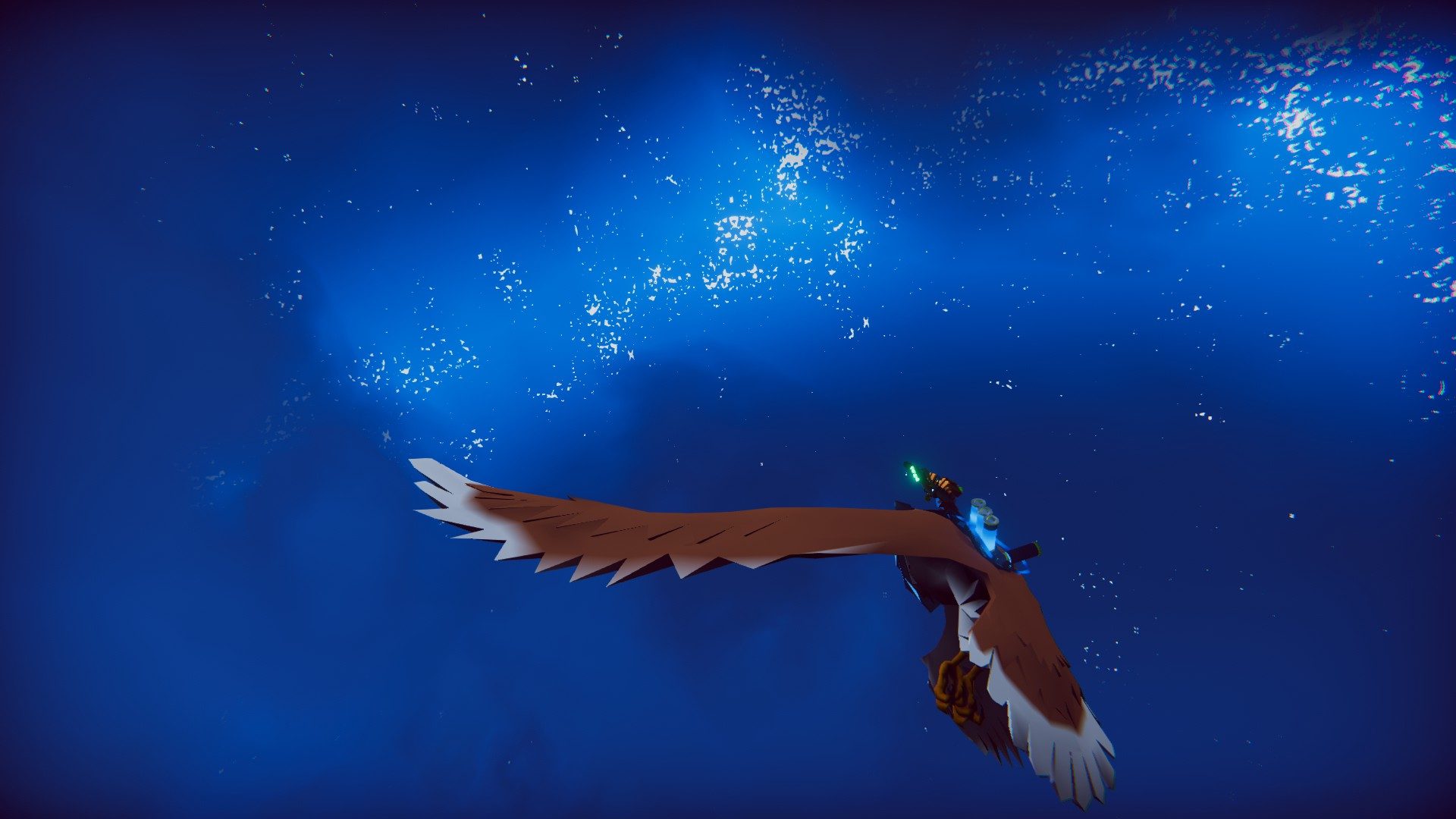

Developed almost exclusively by a single person, The Falconeer is an impressive achievement. Developer Tomas Sala offers a unique take on the air combat genre and embellishes it with a level of quality and scope rivaling that of a AAA product. Even outside of this novelty, The Falconeer is an enjoyable, distinctive experience that’s worth trying despite its flaws.
The game’s mechanical nuances are surprisingly original and make for a compelling control system. The bird that the player controls is capable of moving in all directions, but the player can make the most of its movement only by moving at a downwards angle as much as possible. Doing so not only makes the bird move faster, but also builds up an energy meter used for an even faster dash as well as aerial rolls that can evade enemy attacks and quickly turn the bird around. The energy meter will quickly deplete if the bird moves straight forward or upward, but moving downward while dashing recovers the meter at a faster rate than the dash depletes it, allowing players to dash as much as they want until the bird hits the water. These mechanics are somewhat difficult to adjust to at first, but they combine to form an elegant system worth mastering. Sala clearly thought over how a game about controlling a bird would function and crafted appropriate mechanics to suit that premise. This attention to detail really paid off, as it makes the bird much more enjoyable to control than it would have been otherwise.


Being an air combat game, shooting down enemies makes up the bulk of The Falconeer’s core gameplay loop, and it’s executed about as well as one could hope. Locking onto enemies is balanced so that it assists in aiming without trivializing the process, which preserves the much-needed challenge of dogfighting. Players are also given the option of locking onto an enemy’s subtarget to inflict major damage, which adds a welcome element of target prioritization to the combat. The aforementioned movement mechanics also lend themselves well to the dogfights, as optimizing energy meter conservation for dashes and rolls makes dogfights both more challenging and more exciting. Although the combat mechanics are undeniably simple, especially considering players can only carry one weapon at a time, they are very well-handled.
On top of movement and combat, The Falconeer features an open world that is more robust than I was expecting. While roaming the open map during missions is fairly one-note due to the reliance on waypoint markers for navigation, roaming outside of missions is surprisingly engaging. Players can find a number of landmarks that serve various purposes, such as settlements for shops and extra challenges and shrines for small bits of lore. Many of the settlements offer similarly randomized odd jobs, but their dedicated shops and even the occasional time trial challenge make most of them unique and worth finding. Fun discoveries like the optional airborne shop containing some of the most powerful upgrades really help the map feel less like a series of repeated assets and more like an actual world. What sells this feeling even further is that the game allows you to fly a seemingly infinite distance outside the edges of the map. There is no practical reason to do this, but it allows the world to feel more immersive than it would have felt if it used invisible walls to keep players boxed in the map.


All of these elements really help the game shine, but where it falters is in the pacing of the campaign. The second chapter is where the game reaches its peak, as it sees the player primarily fighting the Freebooter enemy faction, which contains some of the most varied and distinct enemy types in the game. This chapter also requires the player to enter hidden underground sections of the map, which really had me speculating just how intricate the world really was. Unfortunately, none of the later chapters really live up to the sense of discovery found in the second chapter. The fourth chapter in particular disappoints since it features enemy ships that are largely reskins of the pirate faction’s designs. In an interesting decision, all four of the game’s main chapters can be played in any order, with an epilogue chapter being unlocked once the others are completed. This structure builds the final chapter up to be significant, but all it amounts to is an extended hunt for a waypoint marker, which is an incredibly underwhelming way to finish the main story.
The difficulty balancing feels inconsistent as well. While the game’s normal difficulty is mostly lax, there are a few difficulty spikes that come seemingly out of nowhere. This issue is compounded by the lack of checkpoints for each mission. This is not an inherently bad design decision on its own, but this combined with the difficulty spikes and the bizarre one-hit kills that can occur if the player runs into an exploding enemy ship can lead to unneeded frustration. On the other hand, your allies in certain missions can be a little too helpful in whittling down enemies, which can make later encounters feel much less challenging and rewarding.
The game’s presentation thankfully does a lot to make up for these faults. Although the story does not leave much of an impact due to the subpar voice acting and the excessive fantasy gobbledygook, the visuals really help the game stand out thanks to the striking combination of low poly models and cel-shading. They’re one of the most immediately appealing aspects of the game, and they impart it with a sense of artistry and grandeur without feeling overproduced.


All in all, The Falconeer is a fantastic example of the engaging experiences that can happen when a single developer lends their all to a project. There may be room for improvement, but the final product nonetheless soars past expectations.
Score: 7 out of 10
Reviewed on Windows 10 PC
Play games, take surveys and take advantage of special offers to help support mxdwn.
Every dollar helps keep the content you love coming every single day.
